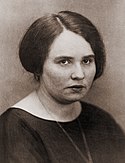May 1924 German federal election
| |||||||||||||||||||||||||||||||||||||||||||||||||||||||||||||||||||||||||||||||||||||||||||||
All 472 seats in the Reichstag 237 seats needed for a majority | |||||||||||||||||||||||||||||||||||||||||||||||||||||||||||||||||||||||||||||||||||||||||||||
|---|---|---|---|---|---|---|---|---|---|---|---|---|---|---|---|---|---|---|---|---|---|---|---|---|---|---|---|---|---|---|---|---|---|---|---|---|---|---|---|---|---|---|---|---|---|---|---|---|---|---|---|---|---|---|---|---|---|---|---|---|---|---|---|---|---|---|---|---|---|---|---|---|---|---|---|---|---|---|---|---|---|---|---|---|---|---|---|---|---|---|---|---|---|
| Registered | 38,374,983 | ||||||||||||||||||||||||||||||||||||||||||||||||||||||||||||||||||||||||||||||||||||||||||||
| Turnout | 29,709,380 (77.4%) | ||||||||||||||||||||||||||||||||||||||||||||||||||||||||||||||||||||||||||||||||||||||||||||
| |||||||||||||||||||||||||||||||||||||||||||||||||||||||||||||||||||||||||||||||||||||||||||||
 Winning party by electoral constituency. | |||||||||||||||||||||||||||||||||||||||||||||||||||||||||||||||||||||||||||||||||||||||||||||
| |||||||||||||||||||||||||||||||||||||||||||||||||||||||||||||||||||||||||||||||||||||||||||||
| This article is part of a series on the |
| Politics of Germany |
|---|
 |
Federal elections were held in Germany on 4 May 1924,[1] after the Reichstag had been dissolved on 13 March. The Social Democratic Party remained the largest party, winning 100 of the 472 seats.[2][3] Voter turnout was 77.4%.[4]
Electoral system
The members of the Reichstag were elected by two methods. A total of 35 multi-member constituencies were to have representatives elected via party-list proportional representation. A party was entitled to a seat via this method for every 60,000 votes they obtained in a constituency. At the second level, the 35 constituencies were combined into 16 constituency associations. A party could claim an additional seat if its vote remainder in the electoral district after distribution of seats by the first method was more than 30,000. As seats were allocated based on vote count, there was not a set number of seats in the chamber.[5]
People who were under the age of 25, incapacitated according to the Civil Code, who were under guardianship or provisional guardianship, or who had lost their civil rights of honour after a criminal court ruling were not eligible to vote.
Results
| Party | Votes | % | +/– | Seats | +/– | |
|---|---|---|---|---|---|---|
| Social Democratic Party | 6,008,905 | 20.52 | −1.40 | 100 | −3 | |
| German National People's Party | 5,696,475 | 19.45 | +4.38 | 95 | +24 | |
| Centre Party | 3,914,379 | 13.37 | −0.27 | 65 | +1 | |
| Communist Party of Germany | 3,693,280 | 12.61 | +10.52 | 62 | +58 | |
| German People's Party | 2,694,381 | 9.20 | −4.70 | 45 | −20 | |
| National Socialist Freedom Movement | 1,918,329 | 6.55 | New | 32 | New | |
| German Democratic Party | 1,655,129 | 5.65 | −2.63 | 28 | −11 | |
| Bavarian People's Party | 946,648 | 3.23 | −0.93 | 16 | −4 | |
| Agricultural League | 574,939 | 1.96 | New | 10 | New | |
| Economic Party of the German Middle Class | 500,820 | 1.71 | New | 7 | New | |
| German Social Party | 333,427 | 1.14 | +1.06 | 4 | +4 | |
| German-Hanoverian Party | 319,792 | 1.09 | −0.04 | 5 | 0 | |
| Independent Social Democratic Party | 235,145 | 0.80 | −16.83 | 0 | −83 | |
| Bavarian Peasants' League | 192,786 | 0.66 | −0.12 | 3 | −1 | |
| Christian Social People's Community | 124,451 | 0.43 | New | 0 | New | |
| Polish People's Party | 100,260 | 0.34 | New | 0 | New | |
| National Freedom Party | 62,071 | 0.21 | New | 0 | New | |
| Geusen League | 59,222 | 0.20 | New | 0 | New | |
| Party of Tenants | 45,920 | 0.16 | New | 0 | New | |
| Republican Party of Germany | 45,722 | 0.16 | New | 0 | New | |
| German Workers' Party | 36,291 | 0.12 | New | 0 | New | |
| Free Economy Union F.F.F. | 36,013 | 0.12 | New | 0 | New | |
| Socialist League | 26,418 | 0.09 | New | 0 | New | |
| Haeusser Alliance | 24,451 | 0.08 | New | 0 | New | |
| Wendish People's Party | 10,827 | 0.04 | +0.01 | 0 | 0 | |
| National Block | 9,561 | 0.03 | New | 0 | New | |
| Schleswig Club | 7,620 | 0.03 | +0.01 | 0 | 0 | |
| Bavarian Middle Class League – Southern Region | 5,659 | 0.02 | New | 0 | New | |
| Independent Economic Group | 1,848 | 0.01 | New | 0 | New | |
| Masurian Union | 1,029 | 0.00 | New | 0 | New | |
| Total | 29,281,798 | 100.00 | – | 472 | +13 | |
| Valid votes | 29,281,798 | 98.56 | ||||
| Invalid/blank votes | 427,582 | 1.44 | ||||
| Total votes | 29,709,380 | 100.00 | ||||
| Registered voters/turnout | 38,374,983 | 77.42 | ||||
| Source: Gonschior.de | ||||||
References
- ^ Dieter Nohlen & Philip Stöver (2010) Elections in Europe: A data handbook, p762 ISBN 978-3-8329-5609-7
- ^ Nohlen & Stöver, p790
- ^ Ogg, Fredericx A.; Shepard, Walter James (1924). "The German Elections". American Political Science Review. 18 (3): 528–533. doi:10.2307/1944174. ISSN 0003-0554.
- ^ Nohlen & Stöver, p777
- ^ Aleskerov, F., Holler, M.J. & Kamalova, R. Power distribution in the Weimar Reichstag in 1919–1933. Ann Oper Res 215, 25–37 (2014). https://doi.org/10.1007/s10479-013-1325-4








